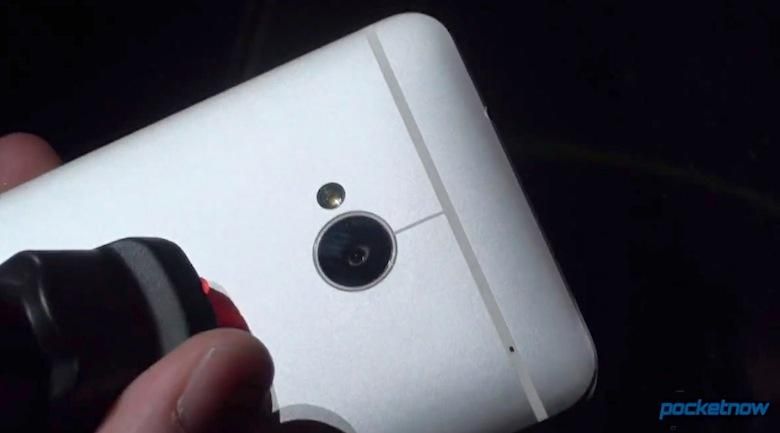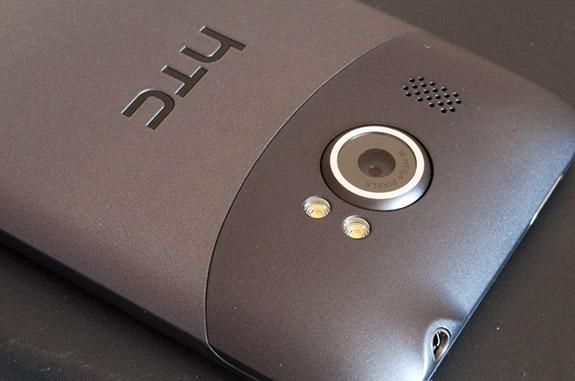I can't begin to count the number of times I have taken a picture with my smartphone and thought, "Man that looks great!" Only a handful of times, however, has the quality of a photo taken with a phone's camera served as passable when viewed at full size.
To date, I can recall no more than a dozen pictures that are really worth keeping, based on quality (not sentimental value). By that, I mean only an extremely small percentage of the pictures I take with my smartphones end up as wallpapers on my laptop or get more use than sharing once and discarding.
But that doesn't mean I won't keep trying.
The problem is, in a nutshell, smartphone cameras suck. To be fair, they're not all bad, especially when you consider the size of the sensors in comparison to a dedicated point-and-shoot camera or DSLR. Smartphone camera sensors are only a fraction of the size, effectively pinholes, yet the quality of images captured by them can sometimes be quite impressive. In the grand scheme of image sensory, though, smartphone cameras are bottom tier, a last resort out of sheer convenience. This is why there is a vicious arms race between mobile manufacturers to be the first to introduce a truly awe-inspiring camera in a pocket-sized package (along with a bevy of other impressive specifications, of course).
Enter PureView, UltraPixel, ImageSense, iSight, etc.
A picture I took with the iPhone 5 last year.
Some of these have been great. At 41-megapixels (38 effective), the 808 PureView packs a serious wallop. Lossless digital zoom (up to 4x) is PureView's most notable trick. But the caliber of image captured with PureView is in an entirely different league than most other smartphone sensors, which comes at the expense of size.
For three years now, Apple's iSight camera has been regarded as one of the best image sensing experiences with a phone (read: the least amount of compromises in form factor or user experience).
Most smartphones come with 8-megapixel cameras. It has become a standard within the industry over years past, and only recently have some dared to break that barrier. The HTC Titan II was among the first with its (underwhelming)
16-megapixel camera. And a handful of 2013 smartphones will bear 13-megapixel shooters, which … sounds great.
But don't let that two-digit number fool you. The extra megapixels speak to very little – if any – improvements in quality. The sensors may offer a higher output resolution, but as AnandTech's Brian Klug explains, most of the 13-megapixel cameras are operating at 1.1 micron pixels on a 1/3.2-inch sensor (versus the 1.4 micron pixels and 1/3.2-inch sensors of standard 8-megapixel cameras). In other words, you're getting a larger output image with the same sensor size, or megapixel fluff.
HTC is headed in the opposite direction, claiming to take the high road and bow out of the megapixel war. In its 2013 flagship, simply titled One, it announced the 4-UltraPixel camera.
What are UltraPixels? Not what we originally thought. Basically, HTC is doing the opposite of its competitors by halving the number of megapixels in its only slightly smaller sensor. For comparison, HTC is using 2.0 micron pixels in a 1/3.0-inch sensor. Effectively, each pixel is nearly twice as large (hence "UltraPixel") and captures more light – allegedly 300 percent more light.
The output, however, is only 4-megapixels, for a total pixel count of 2,688 by 1,520. The output resolution for a standard 8-megapixel camera is in the ballpark of 3,264 by 2,448 pixels (it varies by aspect ratio).
Our own Brandon Miniman expressed his distaste for the idea, stating, "Of course megapixels matter." His argument stemmed from the fact that many mobile displays are at 1080p and beyond. The Nexus 10 display, for instance, hosts a resolution of 2,560 by 1,600 pixels. If you were to load an image taken with the HTC One on the Nexus 10, the image would be full-size to begin with. Any zooming would be like looking at the picture under a microscope – there simply isn't enough image data to look at the image any more closely without throwing detail and clarity to the wind.
HTC played along with megapixel hype as recently as last year with the Titan II.
This would hold true on the last two generations of iPads, Nexus 10 and even the MacBook Pro with Retina Display. And a 4-megapixel image is only twice the resolution of a 1080p display, such as the one on the HTC One, versus an 8-megapixel image being four times the resolution.
So megapixels certainly matter, but not as much as other mobile manufacturers seem to want us to believe.
The question is: is a 4-megapixel camera enough?
The only reason it wouldn't be is if you were going to load images on your Nexus 10 or fourth-gen iPad and look at them closely. Or maybe if you want to print out the pictures you take with your smartphone camera.
The loss in output resolution comes as a major trade-off. No, you can't zoom in nearly as much on a 4-megapixel image as you can an 8-megapixel image. But what's the point in zooming-in on an 8-megapixel image if it sucks, too?
Point being, 8-megapixel smartphone cameras aren't great. The ability to crop and zoom doesn't mean the picture is any better. If anything, it will be a darker image with more noise and artifacts. Chances are, it's not worth zooming-in on either.
HTC's 4-UltraPixel camera promises sharper, brighter images. I haven't had any hands-on with the camera myself, but those who have seem moderately impressed. If all I'm planning to do is share images to Google+, Facebook and Twitter, some of which compress images anyway, 4-megapixels is good enough for me, especially if it promises sharper, more accurate images.
I'm not holding my breath for HTC to deliver an amazing camera. But I do hope the 4-UltraPixel camera inspires other manufacturers to focus less on megapixels and more on image quality.
Feel free to weigh in below!



